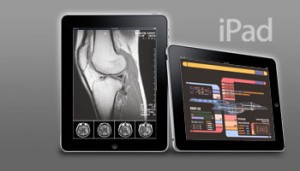 The past year has seen a huge jump in the number of hours that physicians spend online; at the margin, the increase is due to physicians’ use of online via mobile platforms.
The past year has seen a huge jump in the number of hours that physicians spend online; at the margin, the increase is due to physicians’ use of online via mobile platforms.
Meredith Abreu-Ressi, President of Manhattan Research, shared her insights into the firm’s study, Taking the Pulse (v. 11), with me today. The top-line finding of the annual survey is that health professionals have quickly adopted mobile platforms in health — with special attention paid to Apple products, the iPhone and the iPad.
Manhattan Research has tracked physicians’ use of online health resources for over a decade. They’ve found “plateaus” and “jumps” over the years, largely related to changes in bandwidth. In the early days of doctors’ use of online health sites, they spent two to three hours a week seeking information online. As faster speeds became available to physician offices, such as T1 lines, those hours increased to five, then to 8 as more doctors accessed the Internet via cable and DSL.
This year, the survey found that 30% of doctors have an iPad. In the firm’s 2010 survey, the device hadn’t even been released. This is tremendous adoption in the first year of any device, particularly among the user group of physicians.
What was new this year in Taking the Pulse is that Manhattan Research conducted some in-depth, qualitative interviews with physicians. Ressi said that the power of the iPad’s 3G network combined with portability drove doctors using the Apple tablet to “love” the platform — as well as for iPhones, which have replaced Blackberry as physician favorites for mobile phones.
Ressi expects the iPad will be a beloved platform for EMR adoption. In qualitative interviews, the survey found that physicians accessing EMRs through tablets had much more positive comments about the “EMR experience” than physicians using EMRs on desktop computers. There is a lot of interest among all physicians to access EMRs via tablets.
What’s compelling for those physicians who use iPad-based EMRs is their ability to access the record anytime, anywhere, portably. Doctors can move from exam room to consultation room to another exam room, having all of the information essentially “with” them. They can easily take the device home and get work done in a seamless way grabbing minutes available between family time. For example, Ressi told me of a doctor interviewed who said he sat in the car while his family went into the grocery store so he could take those few “interstitial” minutes to catch up with email, check on a patient’s lab results, and email that patient their results with a few lines of context. This highlights the busy life of physicians — and how a portable, user-beloved device like the iPad can enhance professional productivity, even a few minutes a day. “The tablet is a little thing that makes it easier to stay connected and do their job better,” Ressi inferred.
For physicians not using the iPad or another tablet to access an EMR, “they aren’t getting glowing endorsements,” Ressi reported. A representative comment one physician told Manhattan Research in the qualitative interview was, “It turns us into secretaries.”
Taking the Pulse also found that 7% of physicians are using some form of video to consult with patients. “Video” is used quite broadly here, from telemedicine and telehealth to online consultations with patients and fellow physicians via Skype. One psychiatrist interviewed uses video to provide medical care to people incarcerated in prison.
Health Populi’s Hot Points: The dramatic growth of tablets, and especially iPads, among physicians tells an important story about design, usability, and productivity. Physicians have quickly cottoned onto this particular mobile device because those who use find it increases professional productivity because it’s portable, intuitive to learn, and fast. Furthermore, tablet-using physicians say they like how it enhances patient-physician communication.
Doctors tethered to a paper chart or desktop computer can’t easily break their eyes away to visually engage with a patient during an exam. Something about the iPad, physicians find, opens up communication with patients. This can bolster greater trust and health literacy, opening up communication channels between patient and provider. This is a prerequisite for connected health. It’s not about the device itself — which is indeed beloved among its adopters. It’s what that device can do for physicians in their daily lives and workflow that drives its beloved brand status.




 Jane was named as a member of
Jane was named as a member of  I'm gobsmackingly happy to see my research cited in a new, landmark book from the National Academy of Medicine on
I'm gobsmackingly happy to see my research cited in a new, landmark book from the National Academy of Medicine on 